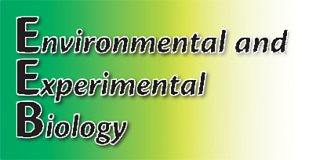
On-line: ISSN 2255–9582

| Faculty of Biology, University of Latvia | ||||||

|
Hard copy: ISSN 1691–8088
On-line: ISSN 2255–9582 Acta Univ Latv (2004) 676: 219–222
|
|||||

|
About the Journal | Retractions | Open Access | Author Guidlines | Current Issue | Archive |
|
Environmental and Experimental Biology |
Acta Univ Latv (2004) 676: 219–222 |
Thin layer tissue cultures are good model in studies of direct induction of various developmental programmes, particularly in floral determination. Despite an increasing number of related investigations, the factors that regulate flower formation in vitro are not yet clear. To evaluate the role of growth regulators in flower and stem meristem genesis, we determined the ratio of regenerating vegetative shoots and flowers as well as the dependence of the growth of regenerated organs on cultivation conditions. Genesis of vegetative organs ocurred after two to three days of cultivation in media with growth regulators. Flower buds appeared after three to four days of cultivation. The number of vegetative shoots continued to increase with the extension of growth regulator exposure from two to six days. However, the number of flowers did not change. The elimination of the stimulus after the initiation of the process showed an increase in the number of organs.